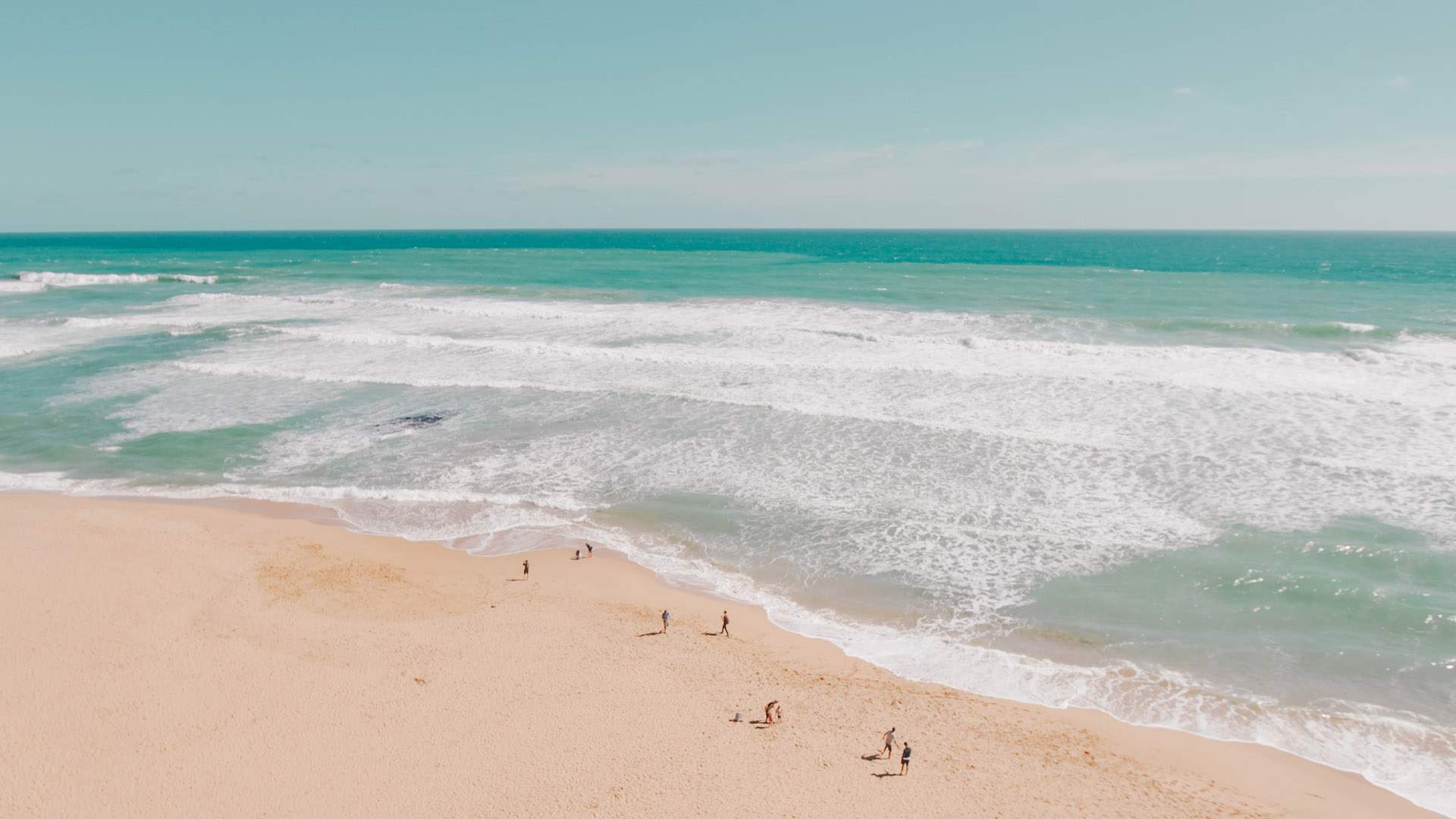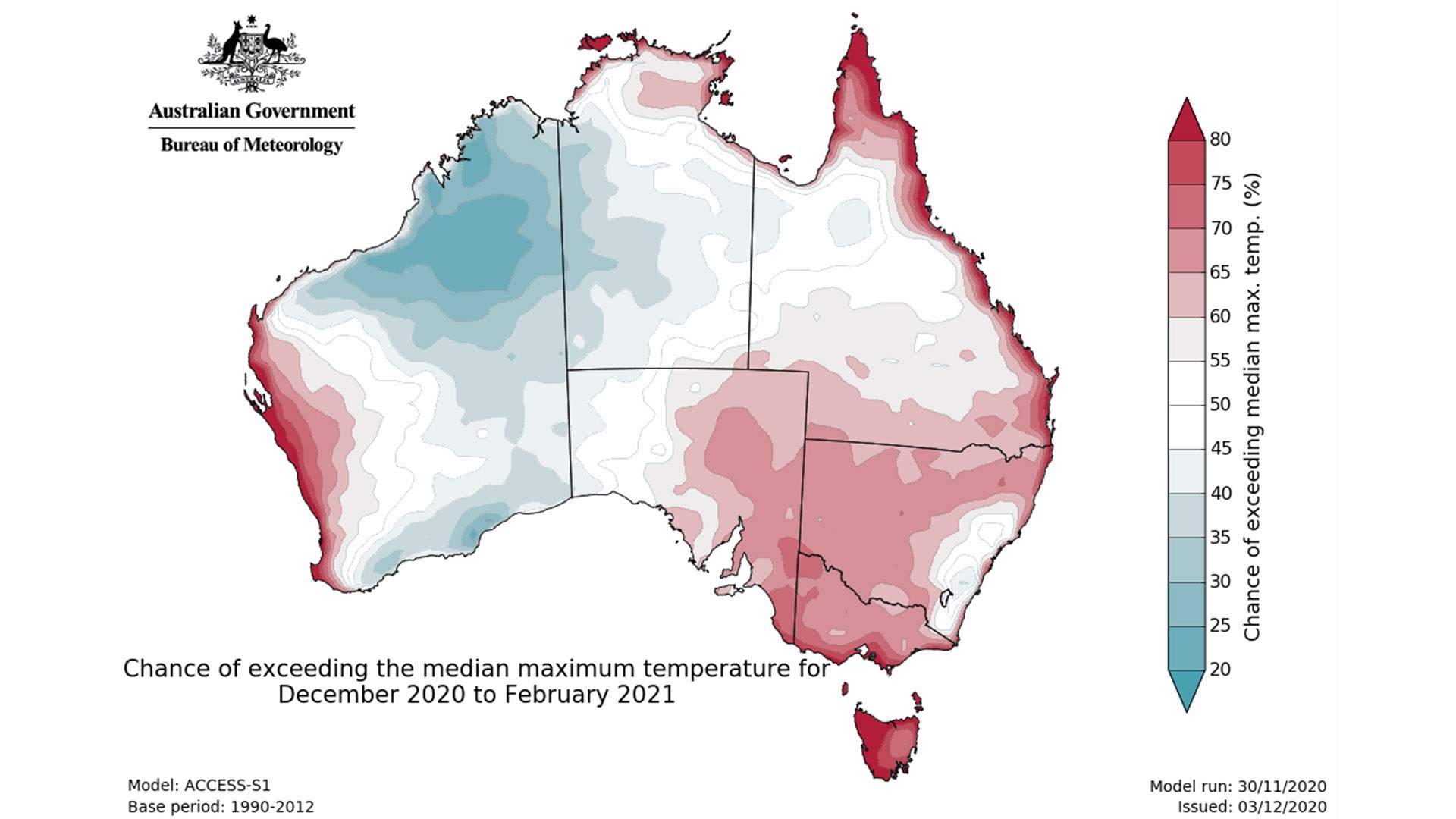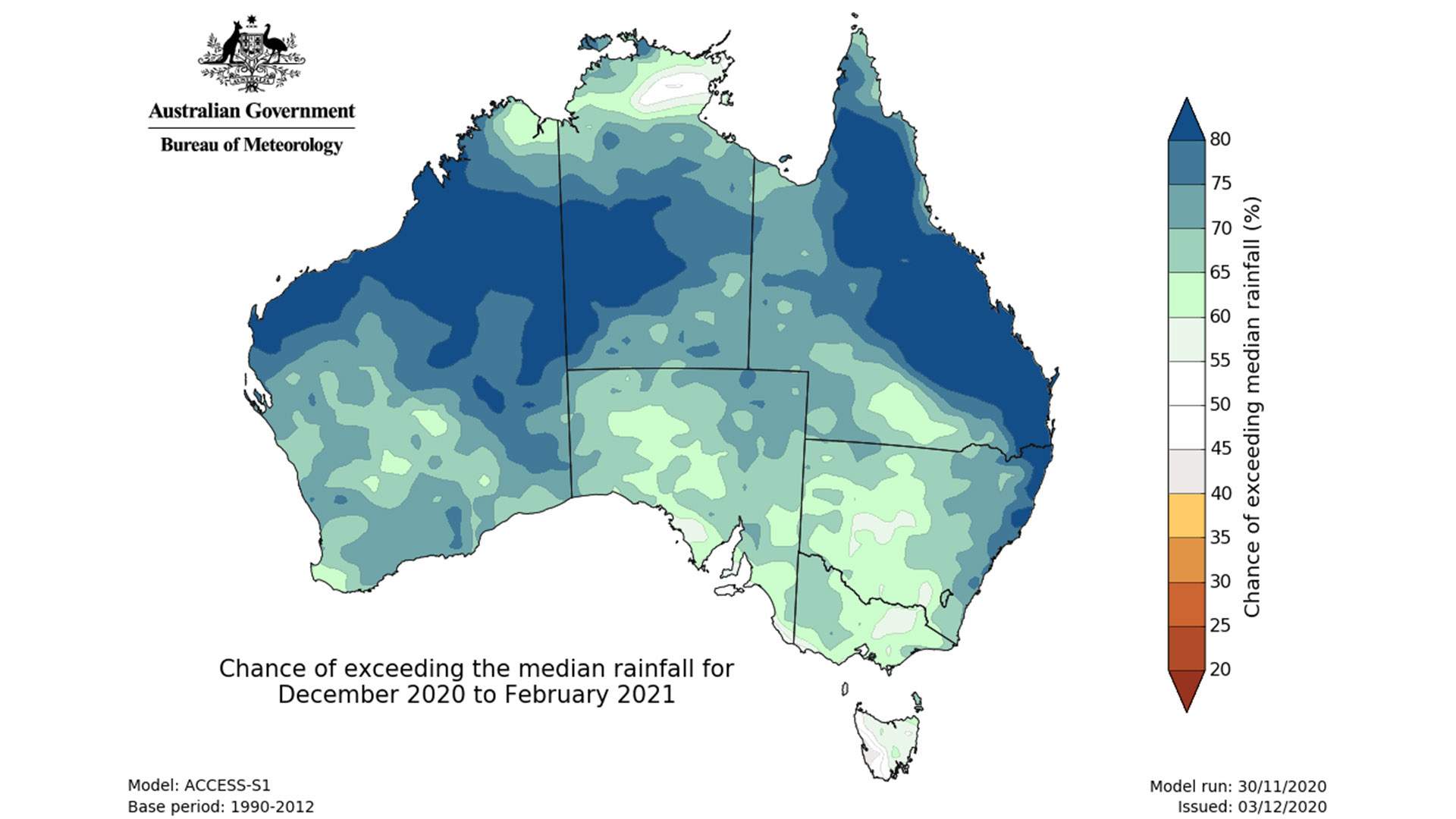Australia Is Expected to Swelter Through a Particularly Warm and Wet Summer
Minimum and maximum temperatures are forecast to be above average from December–February, and rainfall too.
Every quarter, Australia's Bureau of Meteorology releases its climate outlook for the coming season, signalling to the country just what type of weather might be in store. For winter 2020, for example, it advised that we were in for hotter and wetter-than-average conditions. And for the spring just gone — and for the warmer portion of the year in general — it predicted plenty of warm-weather rain.
While BOM has already forecast summer's conditions as part of its severe weather outlook in October, it has now released its actual climate outlook for the season — given that summer officially started this week. The organisation noted two key points. First, it advised that temperatures are likely to be warmer than average in much of the country. Secondly, it noted that there's a high likelihood of above-average rainfall between December–February.
Expect to feel the heat starting from December, especially if you live in southeast Australia, far west Western Australia and along the Queensland coast — where BOM is forecasting maximum temperatures above the long-term average between December 7–20 with a likelihood of at least 70 percent. Looking more broadly at the three-month period, it also expects the same temperature trend to play out across the entire summer along the coast of Queensland and the Northern Territory, in most of Victoria, and in Tasmania, far west WA and southeast South Australia.
Another key indicator of warmth: how low — or high — the minimum temperature gets to overnight. To end November, Sydney reported its highest overnight minimum since temps started being recorded, for instance. BOM expects minimum temperates to exceed the long-term average this summer for the majority of the nation, and predicts there's more than an 80-percent chance that'll happen everywhere but the eastern interior of WA and adjacent parts of NT and SA, where it's touting a 60-percent likelihood.
So, you know that it's going to be toasty. Summer always is, of course; however, again, BOM is predicting temps higher than average. In terms of how wet it'll be, December–February is expected to be wetter than usual with higher-than-average rainfall across most of Australia, especially the northwest of the country, eastern Queensland and along the New South Wales coast. It says there's more than a 75-percent chance that'll be the case in those aforementioned places, while the everywhere else except Australia has a 60-percent possibility.
The predicted extra rain is influenced by La Niña, which is underway in the tropical Pacific — and usually increases the chance of above-average rainfall over eastern Australia during summer. BOM's Head of Operational Climate Services Dr Andrew Watkins advised that large parts of eastern Australia have an increased risk of flooding as a result, too. "Our climate outlook is the opposite of what we experienced last year in Australia. This summer, New South Wales, Victoria and Queensland are expected to see above average rainfall, meaning we face an increased risk of widespread floods," he said
And yes, even with the wet conditions, heatwaves are still likely. "This summer's heatwaves may not reach the extreme temperatures of recent years, but may be longer duration and more humid," noted Dr Watkins.
In other words, staying cool and dry has just become your number-one mission for summer.
For further details about the Bureau of Meteorology's forecast for summer 2020–21, check out its summer climate outlook.







